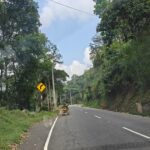As I sit in the Sri Lankan Airlines 320 neo, I cannot but admire the neat and clean aircraft with the welcoming demeanor of the flight attendants who put the passengers at ease. The safety video and inflight entertainment choices are nothing short of, what we call, world class reflecting the aircrafts’ strong affiliation with the One World alliance. I keep wondering why is that our airlines both government and private aspire for global status, membership and experience. Nepalis today are flying planes for multiple airlines, and our flight attendants and service staffs are integral for the operations of huge commercial fleets like Qatar Airways, Emirates and other global airlines earning significant accolades and award., It is worth pondering on why our organizations in aviation industry haven’t capitalized on the talent and potentials. I couldn’t help but compare Sri Lanka with Nepal, Rwanda and other countries, to the point where my family was a bit exhausted by my continuous analysis.
In 2022, Sri Lanka went through a deep economic crisis marked by a serious international debt. The Sri Lankan currency, the value of which was similar to the Nepali currency just a decade back hopped from 200 to 360 Sri Lankan Rupees against a US Dollars in 2022. Now, it has stabilized at 300 which means 1 Nepali Rupee can now buy 2 Sri Lankan Rupees.
Locals are experiencing massive inflations, import freezes and other hardships, which were deemed necessary to set the country back on track. For Nepalis who frequently discuss the economic crisis in Nepal, it is important to understand the essence of true economic crisis. For Sri Lanka this remains in forms of queues for the fuel, cutting down on consumption and labor migration. With time and consistent efforts, the national economy has been returning to its original forms gradually. Lee Kuan Yew, the founding father of Singapore was studying the development model in 1960 and 1970, but the conflict of 26 years between 1983 to 2009 derailed the growth story, identical to how Nepal’s insurgency between 1996 and 2006 wrecked Nepali economy. This ignites a hope for this island country with a belief of the resilience to recover from the challenges of the past.
Tourism is making a strong comeback. After reaching a peak of 2.6 million visitors in 2019, the number plummeted to just 190,000 during the COVID-19 pandemic. However, by 2024, tourism has nearly returned to its pre-pandemic levels. Sri Lanka remains identical to Nepal in terms of wealth of attraction, kindness, politeness and hospitality of the people creating a solid foundation for thriving tourism industry. The country is home to numerous historical sites, and its natural beauty is truly mesmerizing. Even the drive through the landscape is a part of the tourism experience. They have effectively connected their key tourism destinations, enhancing accessibility for travelers.
Connectivity remains to be an essential component for tourism to thrive. Sri Lanka has well-maintained roads and traffic discipline that other countries in Asia could truly learn from. Those who envision Nepal becoming like Switzerland or Singapore should consider a visit to Sri Lanka and learn about how roads can be built and maintained effectively. While traveling in one section of the roads, I noticed some ongoing repairs, however, the vehicles were not disturbed much. The road was wide enough for only one vehicle at a time and remained well managed with the helps of traffic lights. Like Nepal, it is possible to travel from mountains to sea within a few hours, but the difference still remains in the quality of roads and their maintenance. Sri Lanka now needs to leverage the existing infrastructures to attract more high-end tourists to the country.
Nepal should explore its relationship with Sri Lanka and develop tourism packages for Buddhist pilgrims. King Ashoka, who ruled from 232 to 268 BC is often credited for spreading Buddhism in Sri Lanka. His son, Mahendra played a significant role in promoting Buddhism in Sri Lanka while his daughter, Charumati betrothed to a Nepali prince, contributed to its spread in Nepal. However, the trajectories of Buddhism in these two countries diverged. In Nepal Buddhism developed in Mahayana and Vajrayana sects, influenced by the Hindu tantric practices. This was further supported by Thakuris, Mallas, Shahs and Ranas who fostered closer relationship between these two religions. In Sri Lanka however, Buddhism emerged from the Theravada sect, with a deep influence from Hindy practices attributed to the South Indian Kings, who conquered and ruled the island at various times.
As a result, the priest that conducts the rituals at the Toothrelic temple in Kandy is not dressed as a Buddhist monk but resembles a priest from a South Indian temple. The Hindu legends mention Sri Lanka’s existence, portraying its deeper connection with Nepal. Sita was born in Janakpur, where King Ram married her. The Ramayana describes how Sita was taken to this island country by Ravan, and how Ram, aided by the monkey god Hanuman, rescued her. Additionally, there is the mythology of the Ram Setu, the bridge that was said to connect the mainland with the island. This project has generated mixed feelings among Sri Lankans. They understand the challenges of being “sea-locked,” and a 26-mile bridge connecting the two regions could be beneficial. However, they are also aware of the influx of tourists, migrant workers, and the security challenges that come with increased connectivity, leading many to believe that it may be better to remain as they are.
Sri Lanka has worked hard to maintain its distinct cosmopolitan identity following the end of its conflict. Unlike some countries, it has avoided extreme nationalism, such as setting its clock fifteen minutes ahead of India. This approach is beneficial for business in a re-globalized world order. Sri Lanka has successfully marketed its tea on a global scale and is the fourth-largest producer, with output being eight times greater than that of Nepal. The key is effective marketing and enhancing the average selling price! There are many valuable lessons for Nepal to learn from this experience. A trip to Sri Lanka would be worthwhile to see how another South Asian country has navigated challenges and is emerging from a recent economic crisis. It’s all about learning and reflection.
Sujeev is the founder CEO of beed. He leverages over 25 years of experience in diverse fields and geographies to advise, lead and inspire. With comprehensive networks in Nepal’s public, private, civil and diplomatic sectors, Sujeev is a trusted business and policy advisor and respected strategic thinker. From economies of developing countries to economies of human beings, he moves across different worlds, with his passion for the Himalayas being the axis.





